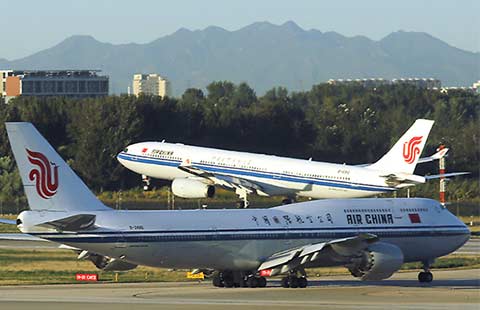PV technology offers way around US duties
By Liu Yiyu (China Daily) Updated: 2012-05-25 10:58
China is developing third-generation photovoltaic technology, which may help Chinese PV makers circumvent heavy duties imposed by the United States, according to He Zuoxiu, an academician at the Chinese Academy of Sciences.
The third-generation technology combines purified silicon (from solar furnaces), sun-tracking technology, light concentration and integrated high-concentration photovoltaic systems.
Researchers are seeking opportunities to commercialize the technology.
Pilot projects in Gansu province and the Inner Mongolia autonomous region have yielded promising economic results, according to He.
Equipment built using the new technology can also be placed on water, which makes the technology desirable for coastal regions.
The cost of the two projects, based on a 10-year payback period, is 0.7 yuan (11 US cents) per kilowatt hour, according to He.
The new type of technology is different from the first generation, which is based on crystalline silicon.
Most Chinese PV makers are producing crystalline silicon PV cells, which are at the center of the ongoing US-China solar trade dispute.
The US Commerce Department announced last Thursday its affirmative preliminary determinations on antidumping duties on Chinese crystalline silicon photovoltaic cells.
The department determined that Chinese producers and exporters sold solar cells in the US market at dumping margins ranging from about 31 percent to almost 250 percent.
The department said it was scheduled to make its final determination in early October.
Meanwhile, China is trying to integrate more renewable energy into its electricity network.
The State Grid Corp of China, the country's largest power distributor, plans to install 90 gigawatts of wind capacity and 8,000 megawatts of solar capacity by the end of 2015.
"The efforts will generate 500 billion yuan ($79 billion) from the manufacturing sector and power generation industry," according to Lin Hongyu, director of the smart grid division of State Grid.
State Grid plans to spend 280 billion yuan on smart grid construction by 2015 as it puts together the world's largest smart grid, Lin said.
According to Lin, solar farms can expand far more rapidly than the grid, which requires lots of preparation before construction.
To encourage renewable energy integration into the grid, the Ministry of Finance announced new subsidies that cover projects that use renewable energy sources to generate power.
The subsidies are intended to support the construction costs and maintenance fees of on-grid projects. Projects within 50 kilometers of the grid will receive subsidies of 0.01 yuan per kilowatt.
Projects at a distance of 50 km to 100 km will receive 0.02 yuan per kW, while projects that are 100 km or further away will receive 0.03 yuan per kW.
liuyiyu@chinadaily.com.cn
- Homegrown technology shines at Beijing tech expo
- Talks on direct currency transaction between Ghana and China expected
- Mainland-Macao trade slumps in Q1
- HK-mainland trade drops in Q1
- China remains biggest investing country in Germany with new project number record
- China expands inspection to boost private investment
- China vows to strengthen manufacturing via internet
- China to cut prices of expensive patent drugs

















